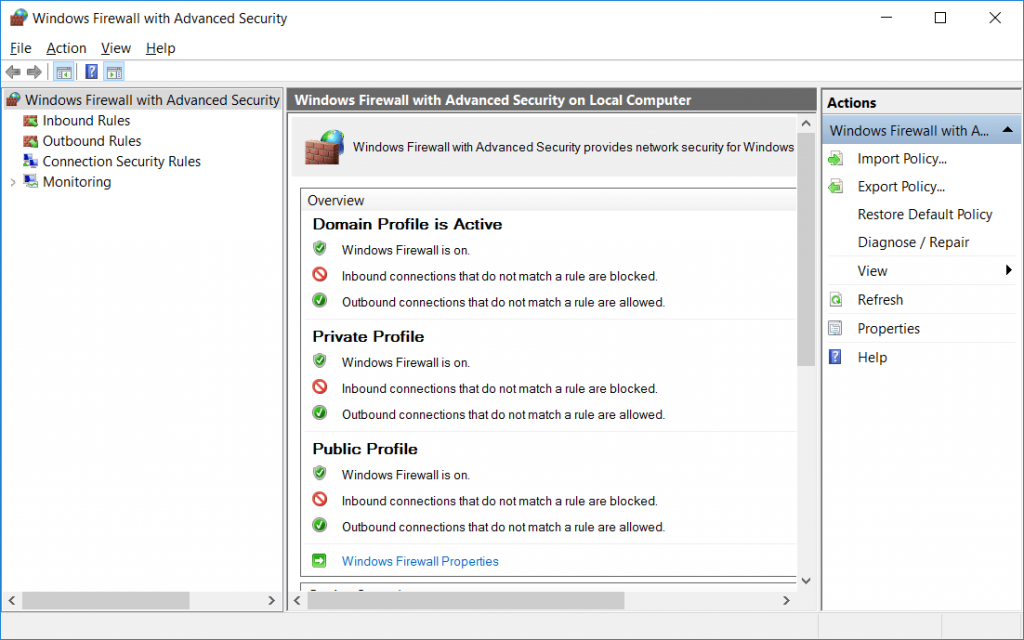

Authorized users – the user accounts for which the rule is applied (for inbound rules only).


Unlike inbound and outbound rules which are applied only to your computer or device, connection security rules require both computers involved in the communication to have the same rules applied.Īll the rules can be configured so that they are specific to certain computers, user accounts, programs, apps, services, ports, protocols, or network adapters. This type of rule is used in very controlled environments with special security requirements. Connection security rules –less common rules that are used to secure the traffic between two specific computers while it crosses the network.When the website is downloaded and loaded by your browser, this is inbound traffic. For example, your request to load the How-To Geek website in your web browser is outbound traffic and it is filtered through an outbound rule. Outbound rules – these rules apply to traffic that is originating from your computer and going to the network and the Internet.
#Tortoisehg thg web windows advanced firewall download
For example, if you are downloading a file through BitTorrent, the download of that file is filtered through an inbound rule. Inbound rules – they apply to traffic that is coming from the network or the Internet to your Windows computer or device.In Windows Firewall with Advanced Security you will encounter three important types of rules: Understanding Inbound, Outbound & Connection Security Rules You will also learn what you can monitor using Windows Firewall with Advanced Security. Most users might never need to dig into these settings, and then there may be that one time where you need to allow an application to have access. You will learn about Windows Firewall with Advanced Security, what this special management snap-in is, and how you can use it to truly control everything that the Windows Firewall does.īefore you do that, however, you will have to have a clear understanding of the types of rules existing in the Windows Firewall and their properties. General Security Tips for Windows Users.Beyond Defender: Third Party Security Products in Windows.Keep Your System Updated for Security and Stability.Using the Action Center for Extra Security and Maintenance.Using the SmartScreen Filter to Screen Out Suspicious Websites and Applications.Using Windows Firewall with Advanced Security.Windows Firewall: Your System’s Best Defense.Windows Defender and a Malware-Free System.Preventing Disaster with User Account Control.Securing User Accounts and Passwords in Windows.


 0 kommentar(er)
0 kommentar(er)
